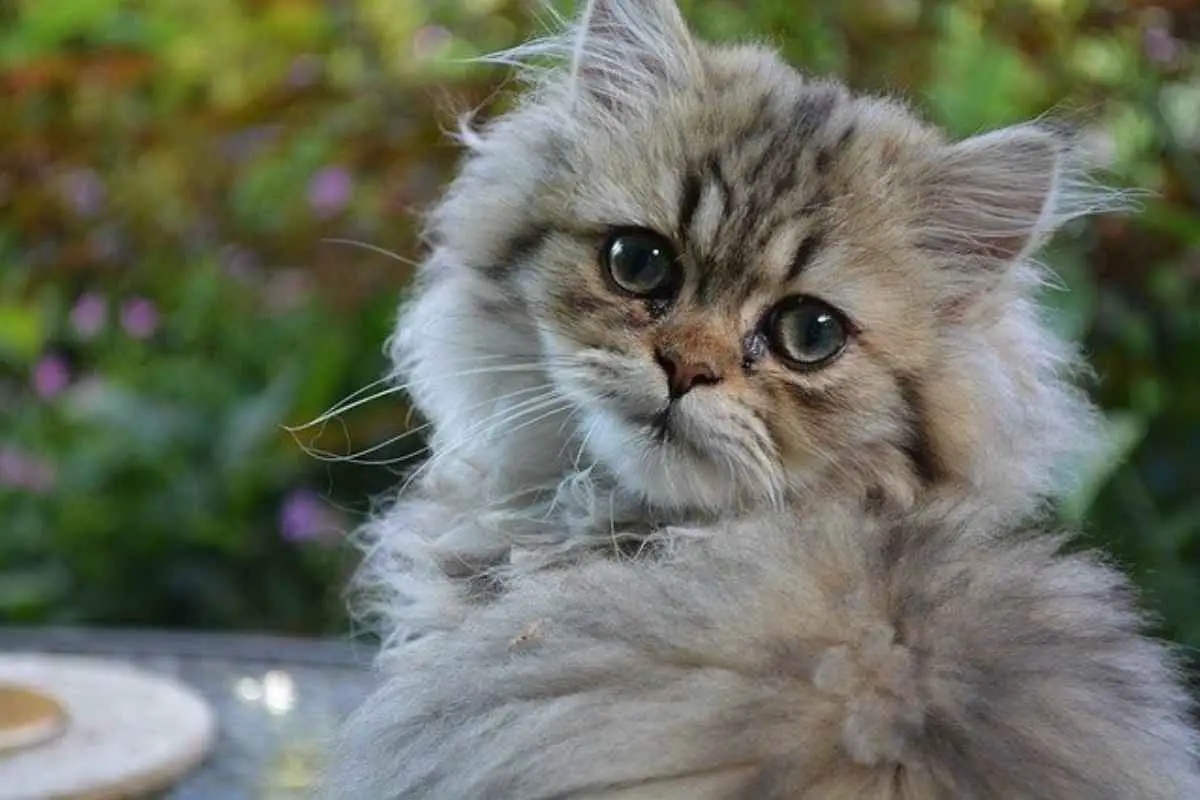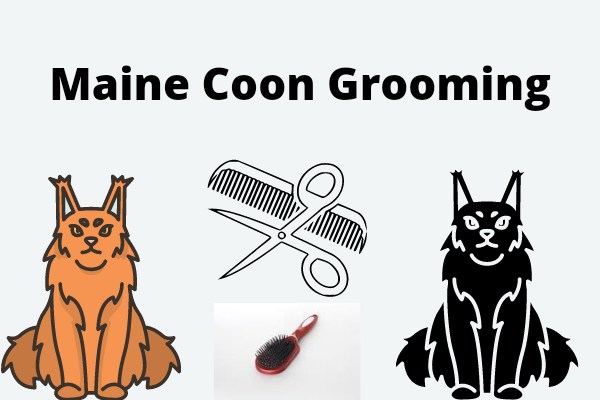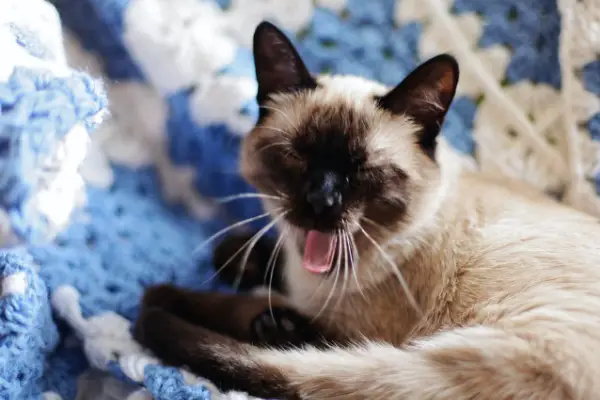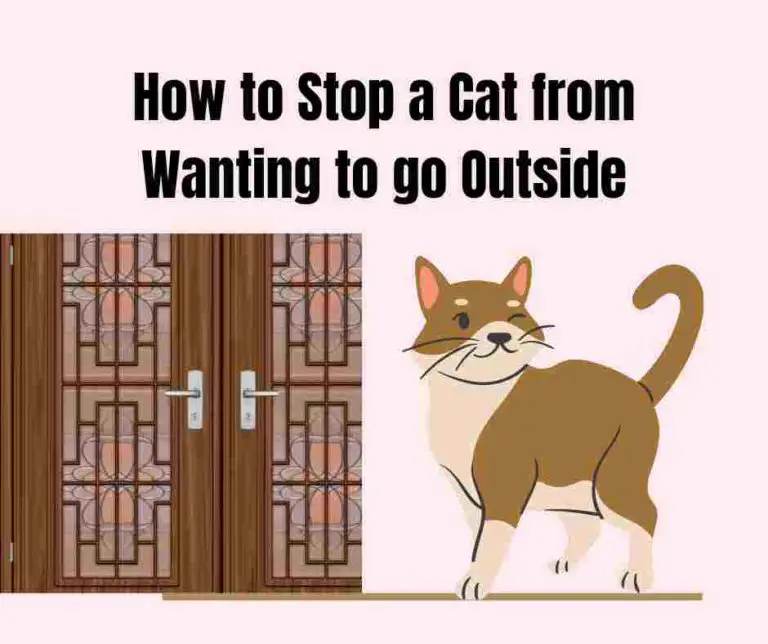Do Persian Cats Shed: 8 Causes & 10 Solutions To Shedding

Persian cat lovers always ask do Persian cats shed a lot, In this article, I will answer it and also outline some common reasons why Persian cats may shed excessively.
After outlining the common reasons why Persian cats shed excessively, we will also outline some common ways or practices to reduce or control shedding in Persian cats.
So, if you are here because you want to know if Persian cats shed, then keep reading because you will get your answer.
Quick tip
Bear in mind that there are no hypoallergenic cat breeds in reality. While certain cat types produce fewer allergens than others, no cat breed is totally safe for cat allergy sufferers.
Let me quickly answer your question do Persian cats shed before we continue!
Do Persian Cats Shed
Yes, Persian cats lose a lot of fur due to heredity, changing temperatures, and climates, which might be seasonal, year-round, or only a few times per year.
Persian cats do not shed any more than any other cat, but their abundance of fur, in comparison to most other cats, may give the appearance that they do.
Nutrition, genetics, weather fluctuations, and sunshine exposure all impact how much shedding a cat produces.
By eliminating hairballs and mats, regular combing and brushing will help to decrease the impact of your Persian cat’s shedding.
Causes of shedding in Persian cats
Here are some of the most prevalent causes of Persian cats shedding excessively:
Seasonal variations
When the temperature is growing warmer due to the time of year, Persian cats will shed, this is one of the most common causes of your Persian cat’s shedding.
In the winter, Persian cats grow a thicker coat to keep warm, and when the weather warms up, your Persian cat begins to shed the extra fur.
When winter arrives, you’ll notice that your Persian cat’s fur thickens and sheds less.
As a result, Persian cats lose their winter coats in the spring in order to maintain their body temperature.
In the fall, they’ll get a thicker coat to prepare for the impending winter. As a result, expect greater shedding at some periods of the year than at others.
Infestation of parasites
Fleas, a common pet parasite, can also create an allergic reaction on the skin of your Persian cat if they bite it.
When these insects pierce a Persian cat’s skin, the cat will try to ease the discomfort by licking, scratching, and biting the affected area, which might result in excessive shedding.
Excessive shedding in Persian cats can be caused or triggered by both internal and external parasites.
Here are some interesting things regarding cats and parasites to learn about:
- What Causes Parasites in Indoor Cats?
- You Should Be Aware Of The 17 Most Common Worm Symptoms In Cats.
- When a cat is dewormed, how long does it take for the worms to disappear?
Allergies in Persian cats
Itching on a cat’s skin can be caused by allergies triggered by food or environmental causes.
A Persian cat may scratch, lick, or bite itself as a result of this. As a result, there’s a chance that the cat loses a lot of hair.
Allergies in Persian cats can be triggered by food, dust, medication, and insect bites.
Make an appointment with your veterinarian if you are concerned about excessive shedding.
Persian cats lose their hair in response to an allergic reaction on their skin when they come into touch with anything they are sensitive to.
This type of shedding does not occur on a daily basis; you will only notice it once in a while. If you do see it, avoid interaction with your cat or bringing allergy triggers close to him.
Excessively anxiety and stress
Unexpected and excessive shedding is most commonly caused by your Persian cat experiencing too much stress or anxiety.
Persian cats are sensitive pets who react quickly to changes in their surroundings.
It takes very little for them to get worried, agitated, or stressed.
Stress factors in Persian cats
- Relocating to a new location.
- You keep changing things in your home.
- Loneliness.
- Sounds that are really loud.
- It’s a loud environment.
- The daily routine is always changing.
- Food has changed.
- A new member of the family.
- Another animal companion.
- There is a lack of mental stimulation, etc.
Because you are going through any type of adjustment in your home, it is essential that you give your Persian cat extra care at this time.
Dietary mistakes in feeding your Persian cat
A cat’s diet can induce abnormal shedding, and nutritional problems can also cause shedding.
If Persian cats do not get the appropriate mix of ingredients, they will shed, which is a sign of bad health.
Protein, Vitamins A, E, and B, as well as other nutrients, are essential for the growth and maintenance of a healthy coat.
It’s also important to choose cat food that’s high in omega-3 fatty acids. It helps the cat’s coat stay healthy and minimizes irritation, which can contribute to scratching.
Also, keep your cat hydrated at all times to help with general health.
As a result, you must provide your cat with high-quality food and ensure that the nutrients in his or her diet are balanced.
Always check with your veterinarian to be sure you’re feeding your cat the proper diet; don’t go by what you read on the internet.
Stick with whatever food works for you and your cat until it no longer does.
Illnesses that your Persian cat is suffering from
You’ll notice that your Persian cat’s fur is falling out in clumps more than anything else if he or she is sick.
When your cat sheds properly, the pattern is different.
Nonetheless, it is critical to be aware of this since you may medicate your cat right away to make him feel better.
A multitude of diseases can cause or promote hair loss in Persian cats.
Here are some of the most frequent health issues that come with hair loss in cats:
- Liver conditions
- Bacterial infections
- Adrenal issues
- Cancer
- Skin diseases
- Kidney disease
- Thyroid issues
Medication side effects
If you have given your cat any sort of medicine and your cat begins shedding immediately afterward, the side effects of the prescription can only contribute to needless shedding.
Some medications, on the other hand, may cause your cat to scratch and shed excessively due to irritation or scaling.
Some diseases may drive your cat to brush herself excessively, leaving her hair with bare spots.
Solution: Seek advice from a veterinarian. If your cat is shedding excessively, you should have him examined to rule out any potential health issues.
Check with your veterinarian to determine if excessive shedding is a side effect of any medications your cat is on.
Changes in hormones
Hyperthyroidism is a frequent disease in elderly cats characterized by an elevated metabolic state induced by an excess release of thyroid hormone.
Excessive shedding is one of the possible adverse effects of this disease, which occurs when the thyroid hormone is overproduced in cats’ bodies.
Female cats are especially prone to this, so if you have one, be aware that she will go through bodily changes, including losing more fur than usual.
Excessive shedding, on the other hand, generally goes away when the female cat gives birth and her body returns to normal.
It’s important to remember that whenever your cat’s hormones fluctuate, you may expect some shedding.
Strategies for reducing shedding in Persian cats
The following are some typical methods for reducing, controlling, or eliminating excessive shedding in Persian cats:
Weekly brushing reduces shedding in Persian cats
Brushing your cat’s coat along the direction of its hair on a weekly basis will not only improve your cat’s skin but will also help minimize shedding.
Combing your cat’s hair twice a week will help you minimize excessive shedding and discover skin problems or fleas, which may both lead to further shedding.
In places where the cat appears at ease, brush in the direction of hair development using a slicker brush, pin brush, or comb with wide-set bristles in the direction of hair development.
It is advised that you brush your Persian cat’s fur on a regular basis. Make a weekly session with your cat a priority if that isn’t possible.
Make high-quality meals available
Keep an eye on your Persian cat’s diet. A well-balanced diet supports good skin and reduces shedding in all cats.
A Persian cat needs a healthy, well-balanced diet. The quality of your cat’s coat is mainly determined by how well you feed it.
Feed your Persian cat a well-balanced diet. This helps her to maintain even the tiniest hair shedding to a bare minimum on the inside.
Her hair and skin will be as smooth and healthy as possible if she eats cat food high in Omega-3 fatty acids, oils, and minerals.
Before altering your Persian cat’s diet, speak with your veterinarian.
Any allergies to Persian cats should be avoided
One of the most important things you can do to keep your Persian cat from shedding excessively is to address any form of allergies.
Allergies in Persian cats can be caused by a multitude of things. Allergens include pollen, mold spores, dust mites, and dead skin cells.
Keep a watch on your cat’s skin and hair for signs of food allergies, such as skin problems or hair loss.
Symptoms of an allergic reaction in a Persian cat
Here are some of the most typical signs that your Persian cat is allergic to certain foods or materials:
- Consistent sneezing
- Vomits repeatedly.
- Running eyes.
- Itchy ears
- Running nose.
- Frequently licking
- Typical diarrhea.
- Swelling of the face.
- The skin is being chewed constantly.
Maintain a low body temperature for your Persian cat always
Since shedding is aided by a warm atmosphere in most cases, your Persian cat will shed more regularly if its body temperature rises.
This is because its coat will make it appear as though it is summer even if it is not.
To avoid excessive shedding due to the high body temperature of the cat, don’t expose your Persian cat to temps above 26-31.8° C if you wish to minimize shedding.
If your Persian cat is exposed to extreme temperatures for any cause, it will shed excessively.
Reduce and control parasite infestations
Not only will fleas, ticks, and other parasites make your Persian cat feel miserable, but they will also degrade the quality of its coat.
Flea bites can cause substantial hair loss as well as itchy, irritated skin if touched often.
Make an appointment with your veterinarian to discuss effective flea and tick control options.
The following are some of the most common ways your Persian cat might get worms or other parasites:
- Accidentally eating fleas might give Persian worms.
- In cats, a mosquito bite might result in worms (heartworm).
- By eating a worm-infected mouse, Persian cats can get worm-infected.
- Persian cats can get worms from dirty litter boxes.
- Persian cats can take up worms when chasing a diseased mice.
- By swallowing worm larvae, Persian cats can get worm-infected.
- Persian cats may take up worms from the house’s potted plants.
- Persian cats can get worms from neglected little flower gardens.
Keep your Persian cat hydrated
Your Persian cat should always have access to clean drinking water.
This is critical because cats with little water intake have dry skin and hair, which leads to excessive molting.
The danger of hazardous germs being swallowed is reduced if your cat’s water bowl is kept clean and full.
Check your cat’s water dishes frequently to ensure they’re only drinking clean water.
Not only may dehydration create health problems, but it can also induce shedding. So, always provide clean water for your cat.
Provide a stress-free environment for your Persian cat
Your cat will shed more fur than normal if it is scared or stressed.
They may also over-groom themselves, leading in bald patches or irritation of the skin.
Avoid all types of stress since it may cause your Persian cats to shed excessively.
Here are some ways to keep Persian cats from being stressed:
- Reduce the amount of cat food you change.
- Keep your cat in safe distance from loud noises and sounds.
- Stop deviating from your cat regular schedule.
- Screaming at your cat is not a good idea.
- Stop rearranging your cat eating schedule.
- Stop changing things in your home.
- Provide lots of toys.
- Provide mental stimulation for your cat.
Give your cat Omega-3 shedding supplement
Omega-3 shedding supplements have been found to aid in the shedding of Persian cats, but you should see your veterinarian first.
Omega-3 fatty acids are good for your Persian cat’s vision and contain components that keep your skin looking young.
Check with your veterinarian for product recommendations before purchasing any Omega-3 Shedding Supplement.
Don’t feed your Persian cat table scraps or leftover food
Persian cats may have stomach pain and excessive shedding as a result of eating table scraps.
Do you realize that eating up table crumbs on the floor might cause a bacterial illness in your Persian cat?
It is not a good idea to let your Persian cat eat from the ground; instead, feed your cat from a clean container.
When you’re eating, don’t let your Persian cat drag stuff off the table, and if they do, don’t let them.
Persian cats have delicate stomachs, and stale food or table scraps may cause them to vomit.
Schedule regular medical check-ups with your vet
When it comes to how to keep cats from shedding, this is a critical step to do because they might shed for a variety of reasons.
Always consult a veterinarian for medical advice and get your cat checked on a regular basis.
Shedding has been linked to a variety of health issues, such as:
- Cancer
- Liver conditions
- Kidney disease
- Thyroid issues
I hope your question Do Persian Cats Shed was answered!






![Why Does My Cat Smell So Bad [12 Potential Reasons] Why Does My Cat Smell So Bad](https://petcreeks.com/wp-content/uploads/2023/10/cat-3054260_640.jpg)